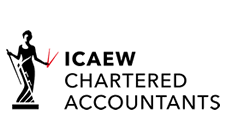Budget 2024: looking behind the speech
The Budget included headline-grabbing tax changes but others were buried in the fine print. What were they and how might they affect you?

Headlines
Undoubtedly the biggest changes announced in the Autumn Budget were those affecting employers’ NI, pensions and inheritance tax reliefs. We’ll cover these separately in dedicated articles, but here we’re looking at the some of small but no less important changes that you might have missed.
HICBC
The high income child benefit charge (HICBC) has been contentious since it was introduced over ten years ago. One of the main criticisms is that it is inequitable. As its name suggests, the charge, which in effect claws back child benefit payments, is aimed at families with “high income”. The trouble is that it can hit families harder if only one parent has income compared with those where both parents do. In March 2024 the government announced that it would review the HICBC to make it fairer. In the Autumn Budget the Chancellor scrapped the review meaning that some families continue to face higher tax bills compared with those who have more income.
Savings and investments
The good news is that contrary to rumours you’ll continue to be entitled to invest in ISAs. The bad news is that the limit on the amount you can invest, currently £20,000 per tax year, is frozen until April 2030. Similarly, the annual investment limits for Junior ISAs will remain unchanged at £9,000 and for Lifetime ISAs at £4,000.
Investors’ relief. This relief was created to encourage business angels to invest in small companies, especially start-ups. The relief is given in the form of a lower rate of capital gains tax (CGT) when the investor sells their shares having owned them for at least three years. The relief was capped to £10 million of capital gains over the investor’s lifetime. The cap is reduced by 90% to £1 million with effect from 30 October 2024.
SDLT
There were well publicised changes to the stamp duty land tax (SDLT) rates for the purchase of second and subsequent homes, but one initially slipped under the radar. From 1 April 2025 the higher SDLT rate of 5% will apply to a property costing more than £125,000, compared to the current threshold of £250,000.
Related Topics
-
Man Utd is cutting staff perks. Should, and can, you?
Manchester United FC is to end free hot meals for its staff as part of a cost-cutting exercise. If you want to withdraw staff perks such as free food, tea and coffee to save on business costs, can you do so?
-
HMRC’s official rate of interest set to increase
HMRC’s official rate of interest will increase from 6 April 2025. What does it apply to, what is the new rate and what else is changing?
-
HMRC and Companies House to scrap free filing services
From April 2026 companies won’t be able to file their tax returns and accounts using the HMRC and Companies House free-to-use service. What steps should companies take ahead of the deadline?


 This website uses both its own and third-party cookies to analyze our services and navigation on our website in order to improve its contents (analytical purposes: measure visits and sources of web traffic). The legal basis is the consent of the user, except in the case of basic cookies, which are essential to navigate this website.
This website uses both its own and third-party cookies to analyze our services and navigation on our website in order to improve its contents (analytical purposes: measure visits and sources of web traffic). The legal basis is the consent of the user, except in the case of basic cookies, which are essential to navigate this website.